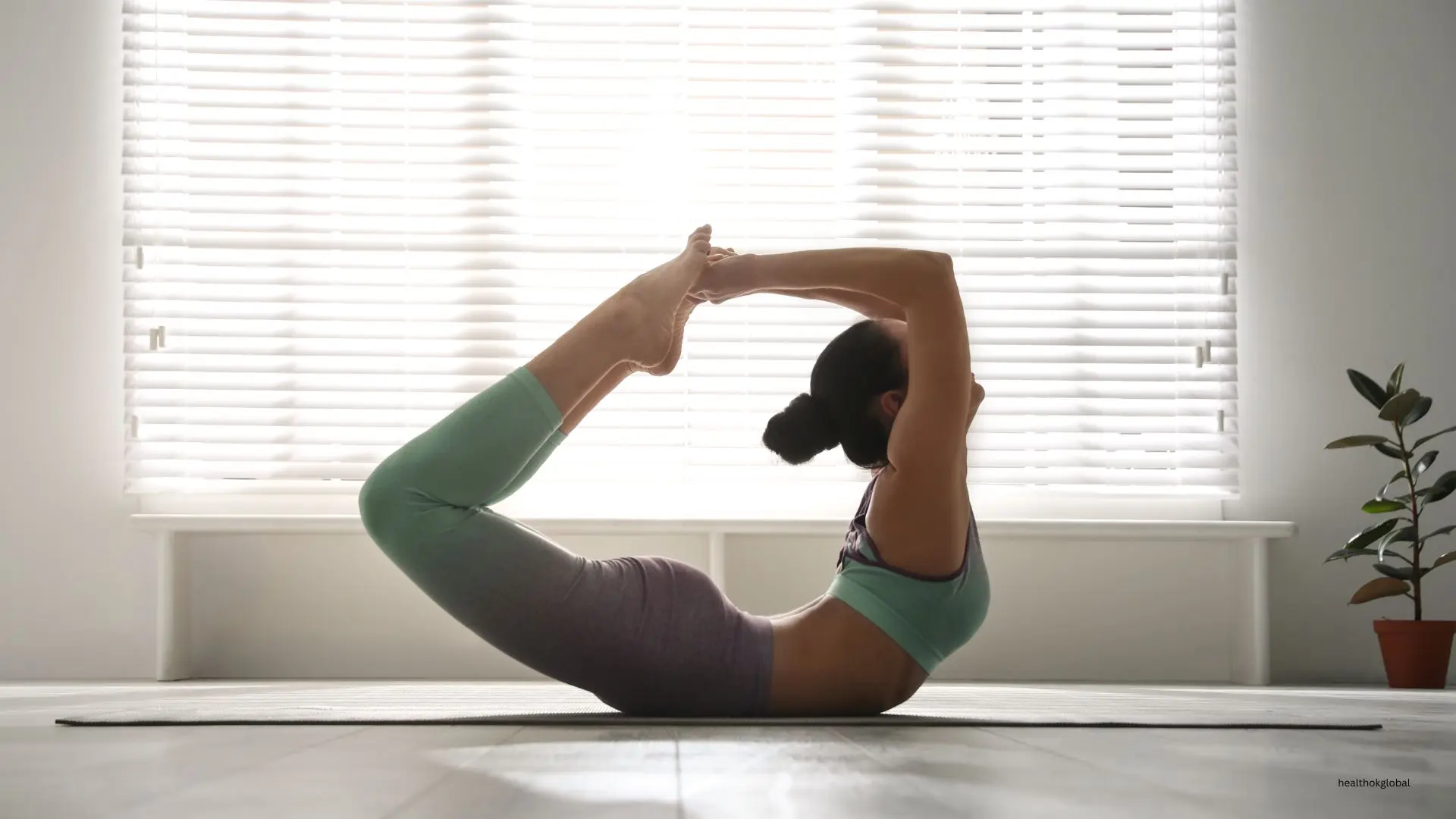Dhanurasana, also known as the Bow Pose, is a powerful yoga posture that promotes physical and mental well-being.

Blog
Dhanurasana Yoga: Benefits, Steps, and Tips for Mastery
Dhanurasana, also known as the Bow Pose, is a powerful yoga posture that promotes physical and mental well-being. This back-bending pose stretches the entire front of the body, improves posture, and enhances flexibility. Practicing Dhanurasana regularly can strengthen the back muscles, stimulate the digestive organs, and reduce stress. This blog explores the benefits, step-by-step guide, and tips for mastering Dhanurasana.
Dhanurasana offers a range of physical and mental benefits. Some of the key benefits include:
The Bow Pose stretches the front of the body, including the chest, abdomen, and thighs, enhancing overall flexibility.
This pose strengthens the back muscles, helping to improve posture and alleviate back pain.
Dhanurasana stimulates the digestive organs, promoting better digestion and metabolism.
The pose helps to reduce stress and anxiety by promoting relaxation and mental calmness.
Dhanurasana opens the chest and improves lung capacity, enhancing respiratory function.
The pose helps to balance the body's energy levels, promoting a sense of harmony and well-being.
Regular practice of Dhanurasana can improve reproductive health by stimulating the pelvic organs.
The Bow Pose improves blood circulation, promoting overall health and vitality.
To perform Dhanurasana, follow these steps carefully:
Lie flat on your stomach with your arms resting by your sides and your legs extended.
Slowly bend your knees and bring your heels as close to your buttocks as possible.
Reach back with your hands and grasp your ankles, keeping your feet hip-width apart.
Inhale deeply and lift your chest and thighs off the ground, arching your back and creating a bow shape with your body.
Hold the pose for 15-30 seconds while breathing deeply.
Exhale and slowly lower your chest and thighs back to the ground, returning to the starting position.
Mastering Dhanurasana requires practice and patience. Here are some tips to help you improve:
Always warm up with gentle stretches before attempting Dhanurasana to prevent injury.
If you find it challenging to hold the pose, use a yoga strap around your ankles for added support.
Maintain steady and deep breaths throughout the pose to stay relaxed and focused.
Engage your core muscles to support your lower back and maintain stability.
Incorporate Dhanurasana into your regular yoga practice to build strength and flexibility over time.
Never push yourself too hard. Listen to your body and modify the pose as needed to avoid injury.
Avoid these common mistakes to ensure safe and effective practice:
Keep your body in a straight line and avoid arching your back during the pose.
Keep your breath steady and avoid holding your breath during the pose.
Don't force your body into the pose. Ease into it gradually and respect your limits.
Always warm up properly before attempting Dhanurasana to prevent muscle strain.
To make Dhanurasana accessible to all levels, consider these modifications and variations:
Use a yoga block or bolster under your chest for added support.
Perform the pose with one leg at a time for a gentler variation.
For a deeper stretch, hold the pose for a longer duration or bring your hands closer to your feet.
While Dhanurasana is beneficial, it may not be suitable for everyone. Take the following precautions:
If you have a history of back injuries, consult with a healthcare professional before attempting this pose.
Those with neck injuries should be cautious and modify the pose as needed.
Pregnant women should avoid Dhanurasana due to the pressure it places on the abdomen.
Always listen to your body and avoid pushing yourself beyond your comfort level.
Dhanurasana, or the Bow Pose, is a powerful yoga posture that offers numerous benefits for both the body and mind. By incorporating this pose into your regular yoga practice, you can improve flexibility, strengthen your back muscles, and enhance overall well-being. Remember to follow the steps carefully, listen to your body, and practice regularly to master Dhanurasana and enjoy its full range of benefits.
Dhanurasana offers a range of physical and mental benefits. Some of the key benefits include:
To perform Dhanurasana, follow these steps carefully:
To make Dhanurasana accessible to all levels, consider these modifications and variations:
Need Personalized Health Guidance?
Get expert advice tailored to your specific health needs from our qualified healthcare professionals.





